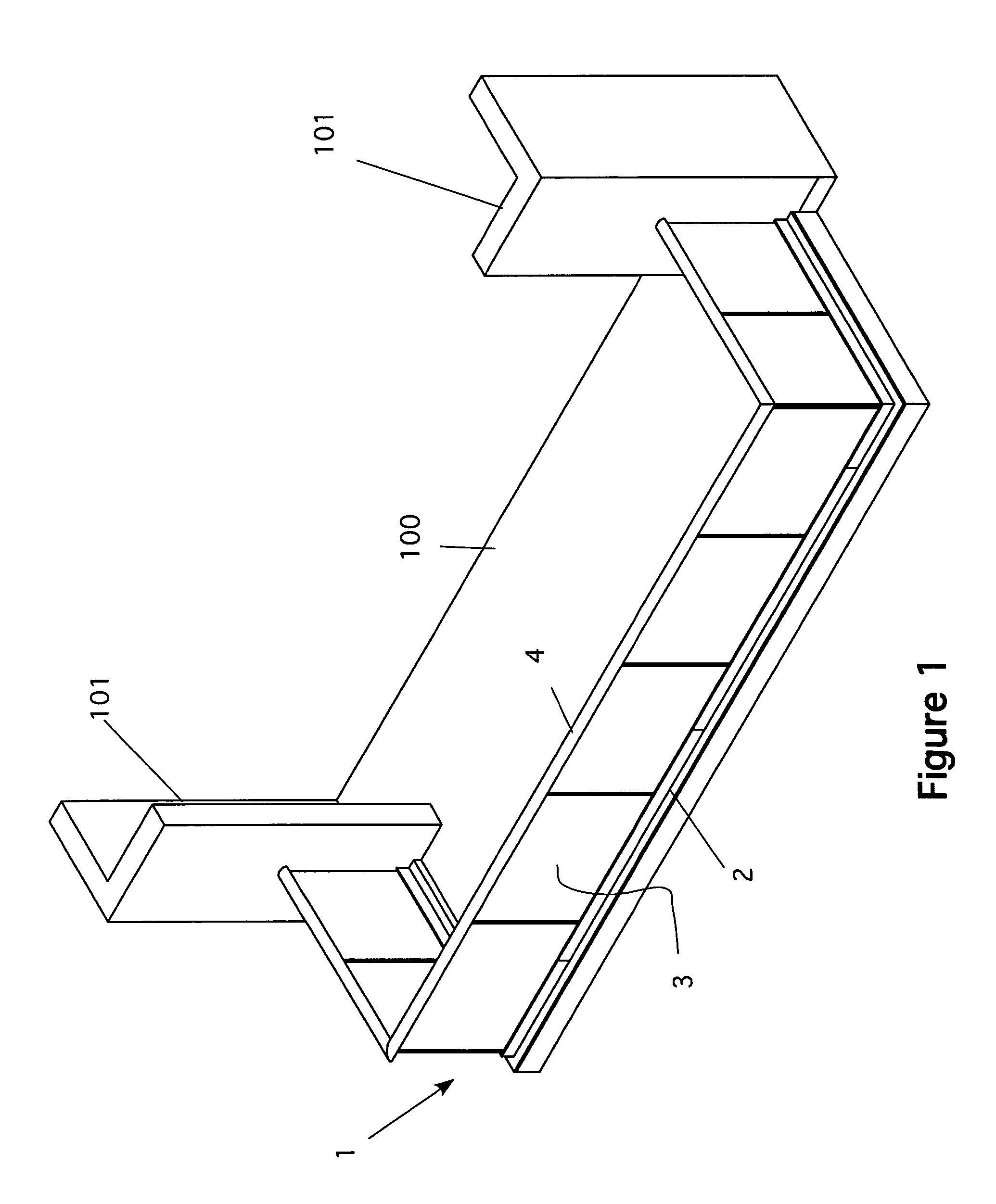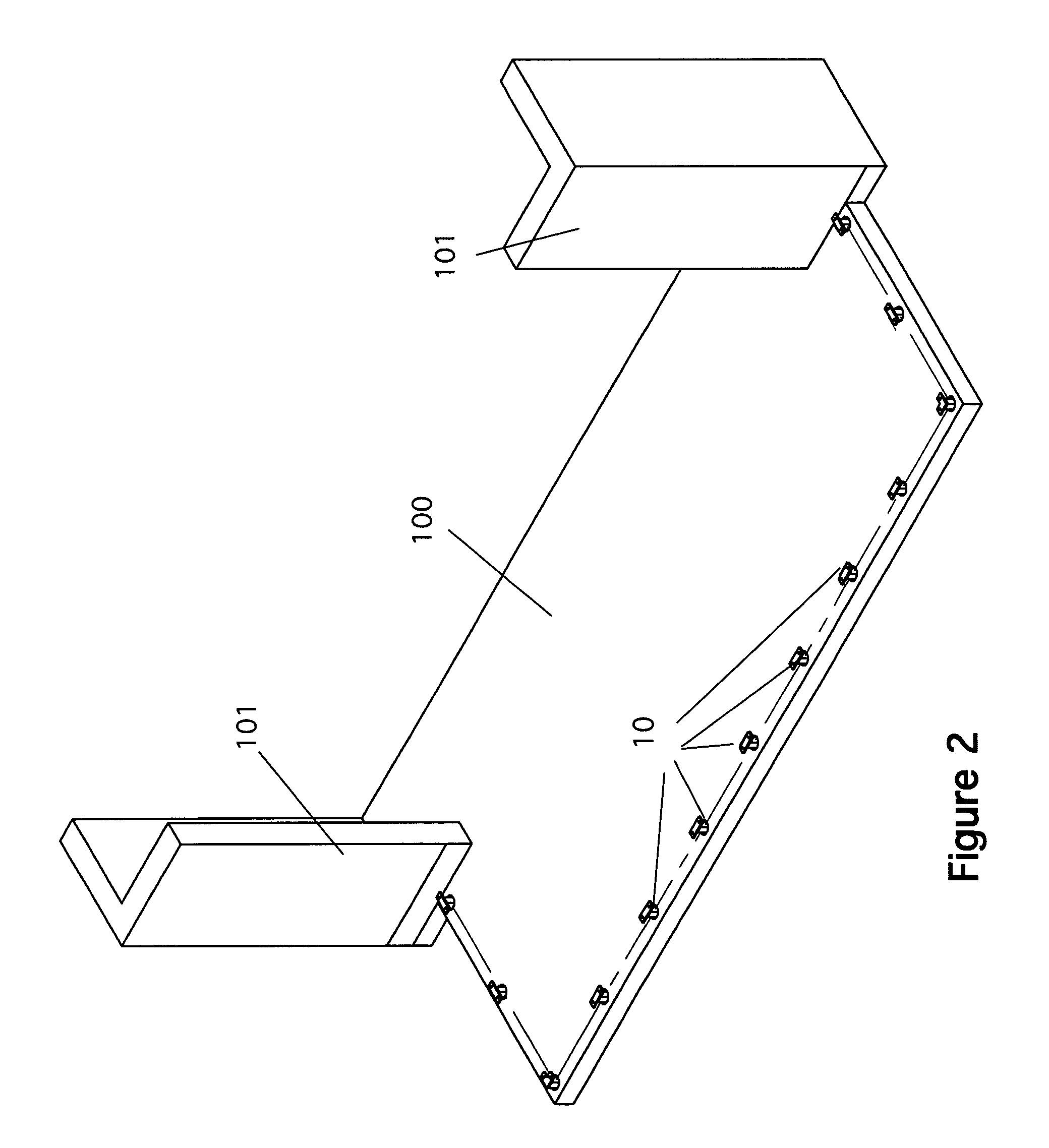Stanchion base shoe support for railings
a technology of stanchion and support, which is applied in the direction of balustrades, building types, constructions, etc., can solve the problems of requiring the technician to wear protective respirator equipment and hazardous cement dust, and achieve the effect of greater strength
- Summary
- Abstract
- Description
- Claims
- Application Information
AI Technical Summary
Benefits of technology
Problems solved by technology
Method used
Image
Examples
Embodiment Construction
[0030]Referring now to FIG. 1, a perspective view of a railing incorporating the new design is shown. Here, a balcony 100 with building walls 101 is shown. The balcony is typically reinforced concrete. At the outer perimeter of the balcony is a railing 1. The railing has a base shoe 2, a number of infill panels 3 and a top rail 4. The infill panels 3 are typically glass, but can be any material ordinarily used for the purpose. The major difference between this railing system and others commonly used is that the base shoe 2 is not mounted directly into the concrete slab or curb. Rather, the base shoe 2 is secured to a number of stanchions that are embedded into the concrete.
[0031]FIG. 2 is a perspective view of a balcony with a set of stanchions embedded in a concrete curb. Here, the balcony 100 is shown without the base shoe and railing in place. In this view, the stanchions 10 are clearly shown.
[0032]FIG. 3 shows the stanchions 10 embedded in a concrete curb in a plan view. Note th...
PUM
 Login to View More
Login to View More Abstract
Description
Claims
Application Information
 Login to View More
Login to View More - R&D
- Intellectual Property
- Life Sciences
- Materials
- Tech Scout
- Unparalleled Data Quality
- Higher Quality Content
- 60% Fewer Hallucinations
Browse by: Latest US Patents, China's latest patents, Technical Efficacy Thesaurus, Application Domain, Technology Topic, Popular Technical Reports.
© 2025 PatSnap. All rights reserved.Legal|Privacy policy|Modern Slavery Act Transparency Statement|Sitemap|About US| Contact US: help@patsnap.com



